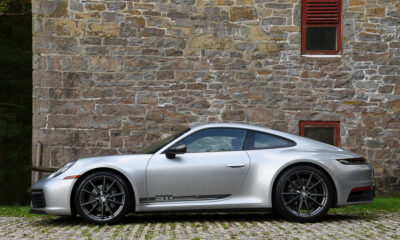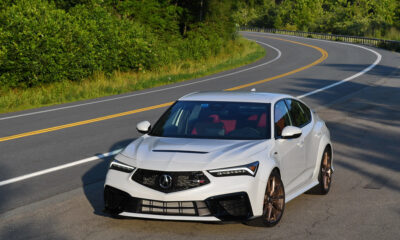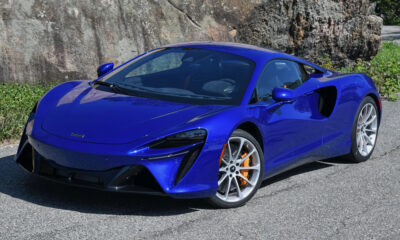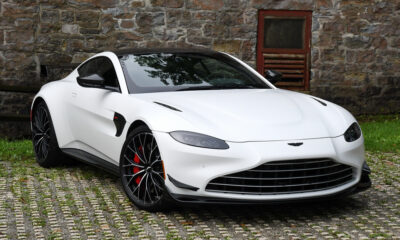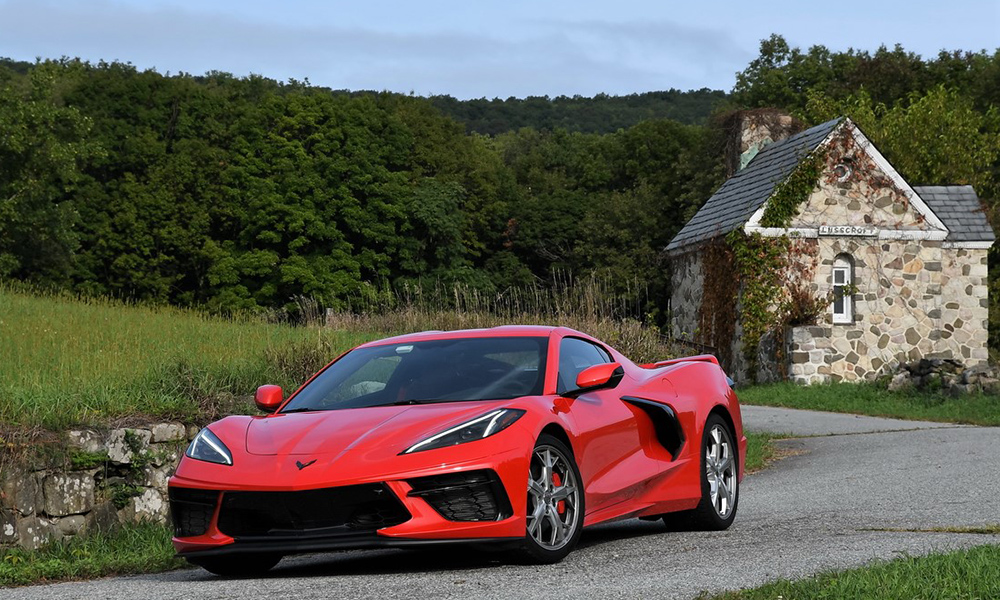
Photo: David Haueter
The new C8 generation Chevy Corvette was one of the most anticipated new sports cars of this century, and maybe part of the last as well.
Going from a front-engine to a mid-engine layout after nearly 70 years with such an iconic car was a huge change, especially considering the risk that it could alienate the hardcore Vette enthusiasts who were perfectly happy with the engine in front.
Putting the engine in the back wasn’t as simple as moving it behind the seats.
It also required a dramatic design change that gave the C8 a side profile that looks akin to other mid-engine cars like the Ferrari 488 and Acura NSX and gives the driver a different view over the hood.
To allow for the luggage space that Corvette designers wanted, it was also necessary to increase the length of the C8 by nearly six inches versus the C7, and it’s just over two inches wider.
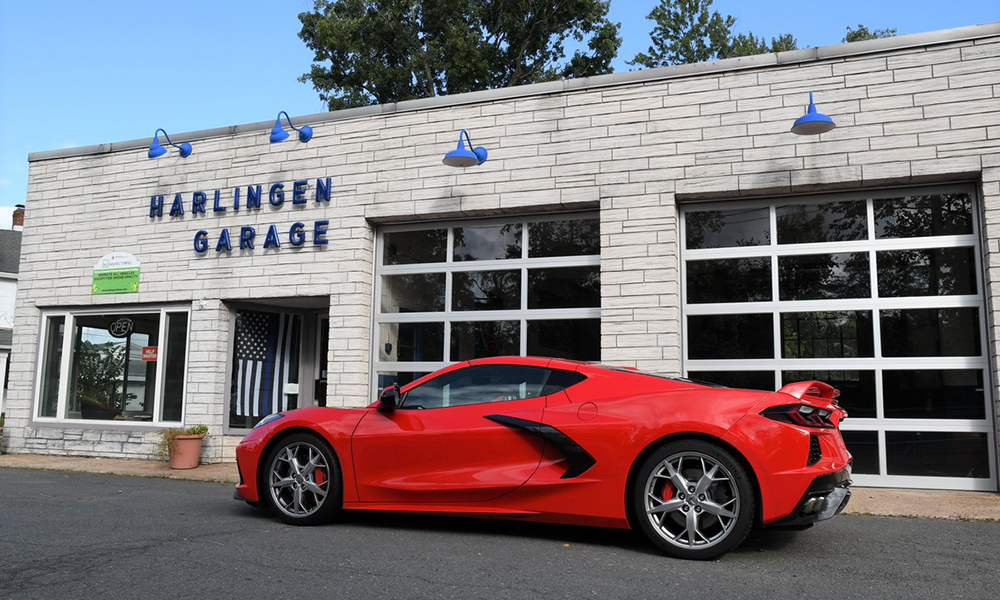
Photo: David Haueter
After a week spent driving the new C8 coupe, it’s clear that all the concerns with making such major changes to America’s sports car were unfounded.
This car is all Corvette and moves the ball forward from previous generations not only with performance, but with quality.
There are a few key features of the C8 Corvette that retain the cars unique character. The first is the design of the car. Even with major design changes, the C8 still looks like a Corvette, especially from the front and rear.
It’s an important element of the car that Corvette designers were able to retain design cues that link it to previous generations. It is awkward looking in a couple of places, like the bulky area around the side vents, but it looks like a supercar.
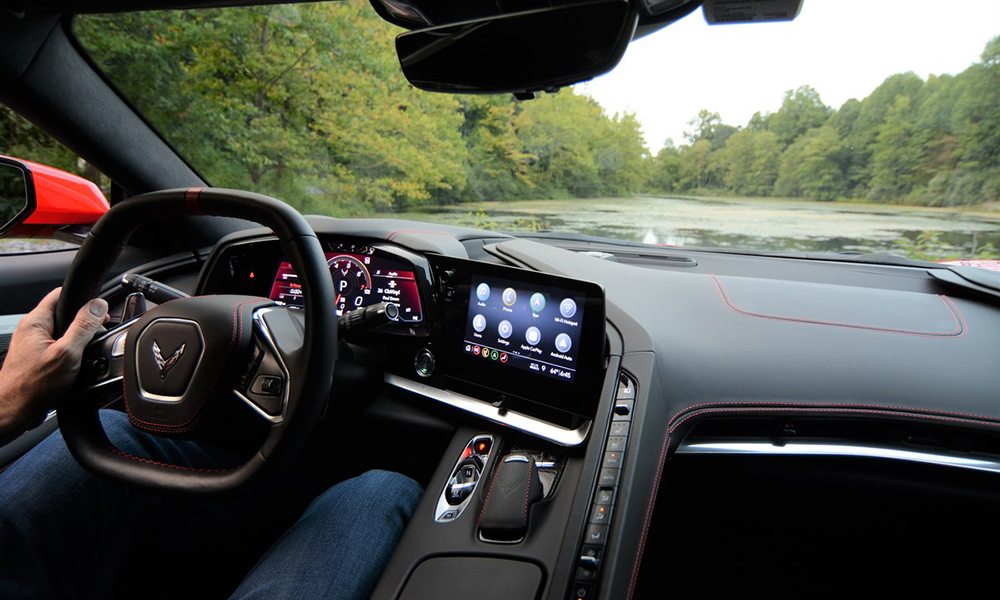
Photo: David Haueter
Like the exterior, the cockpit is quite different from the C7 Corvette but in a good way. There’s more legroom and fit and finish quality is on a higher level than any Corvette before it.
The seats are better, giving more support for sporty driving but also delivering better comfort. I like the way the dash wraps around the driver, and though it looks a little odd, the squarish steering wheel feels good in the hands. It’s also cool that you can look through the back window and see the motor.
The driver gets all kinds of information via the electronic dash display, which varies depending on the driving mode (Tour, Sport, Track).
One interior design feature I was unsure about before I drove the car was the long row of buttons between the driver and passenger sides of the cockpit that are mostly for climate control. It takes a while to get used to them, but I’d rather have the manual buttons where they are than look for them in a menu on the infotainment system.
The second feature that goes a long way toward keeping the Corvette character intact is the motor.
Instead of going with a turbocharged unit like everyone else these days, Corvette stuck with a normally aspirated 6.2-liter V8, which features variable valve timing, direct fuel injection and active fuel management.
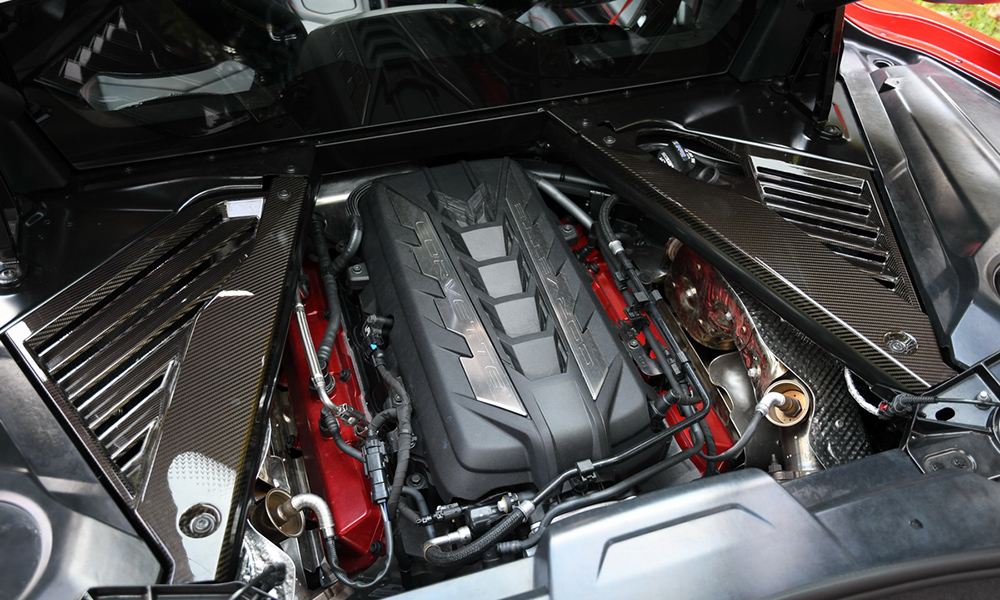
Photo: David Haueter
It pumps out 490hp and 465 lb.-ft. of torque in stock form, with the Z51 package ($5,995) that was on our test car bumping it up to 495hp and 470 lb.-ft.
Having a small block V8 under the hood is Corvette tradition, and the LT2 V8 has some improvements over the LT1 that preceded it, including more efficient intake and exhaust manifolds, a new camshaft and a more advanced dry-sump oiling system.
You still feel that rumble from the V8, even though it’s now behind you, and it can take the C8 from 0-60mph in under three seconds. The only transmission available is a Tremec 8-speed dual-clutch unit. No manual option on this car.
The third feature that makes the Corvette stand out from other mid-engine supercars is the way it drives. With the magic of GM’s Magnetic Ride Control, the C8 is perfectly willing and able to be driven comfortably every day if you wish.
When you put this car in Tour mode, it almost feels like a family sedan with the way it handles bumps. It also has a surprising amount of luggage space with trunks in the front and rear and gets an impressive 27mpg on the highway.
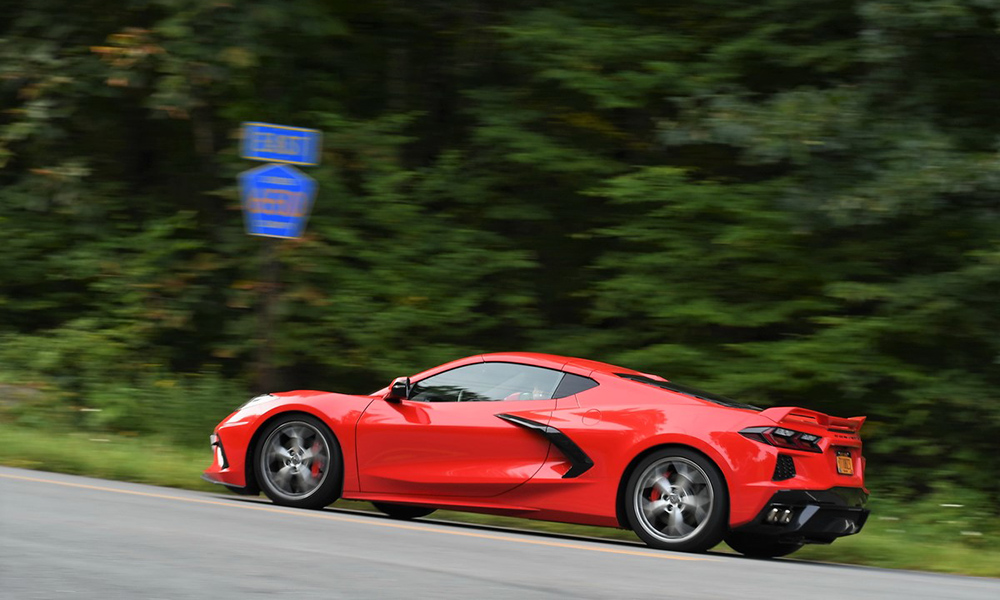
Photo: David Haueter
Once you get the Corvette onto a twisty back road and put it into Sport or Track mode, the car changes its driving character, with more of the experience that you would expect from a supercar. Handling is very neutral in spirited driving with a lot of grip from the Michelins, and the car is nicely balanced in quick transitions with minimal body roll.
It also puts power down very well, helped by the electronic limited slip that’s part of the Z51 package.
It’s incredibly quick, and the transmission and brakes are both up to the kind of driving that this car is capable of. Though the top of the dash is a bit long, I like the view over the hood and the feeling of being closer to the road.
In my opinion, the one downside of the C8 Corvette is that it doesn’t feel as exciting to drive in a routine manner as other supercars.
Part of that is from the exhaust note, which is too quiet even with the Performance exhaust. The sounds that come from cars like the McLaren 600LT and the Ferrari 488 add to the excitement and make every drive an event.
While the muted exhaust note of the Corvette may be appreciated by some, it should at the least be more brash in Sport or Track modes.
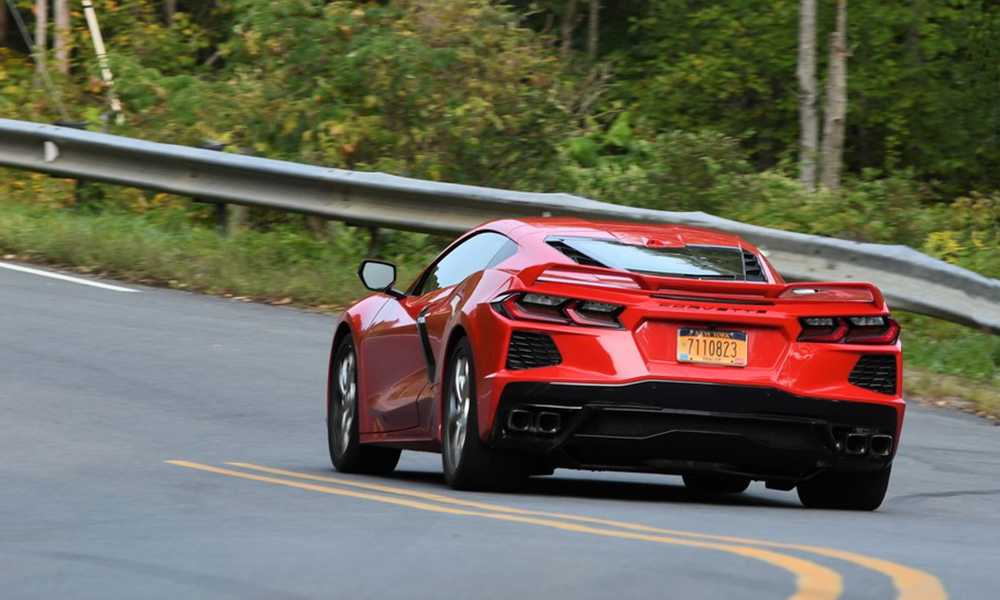
Photo: David Haueter
The dual nature of the C8 Corvette is really what sets it apart from other supercars, and I understand why it was made that way. It needs to appeal to a broad audience, from guys who may have owned several other Vettes before but are now getting a little older, to younger driving enthusiasts that are a crucial part of the car’s future.
The C8 Corvette may lack some of the drama of other European supercars, but it’s also more practical and easy to drive on a daily basis and it costs a lot less, with the base model Stingray starting at a mere $59,995. It’s truly a practical supercar.
Those wishing for more excitement or street presence can wait for the upcoming Z06 model, which should hit before the end of 2021.
That car is expected to be powered by a 5.5-liter flat-crank V8 that puts out over 600hp and have more advanced suspension, brakes and aerodynamics.



















